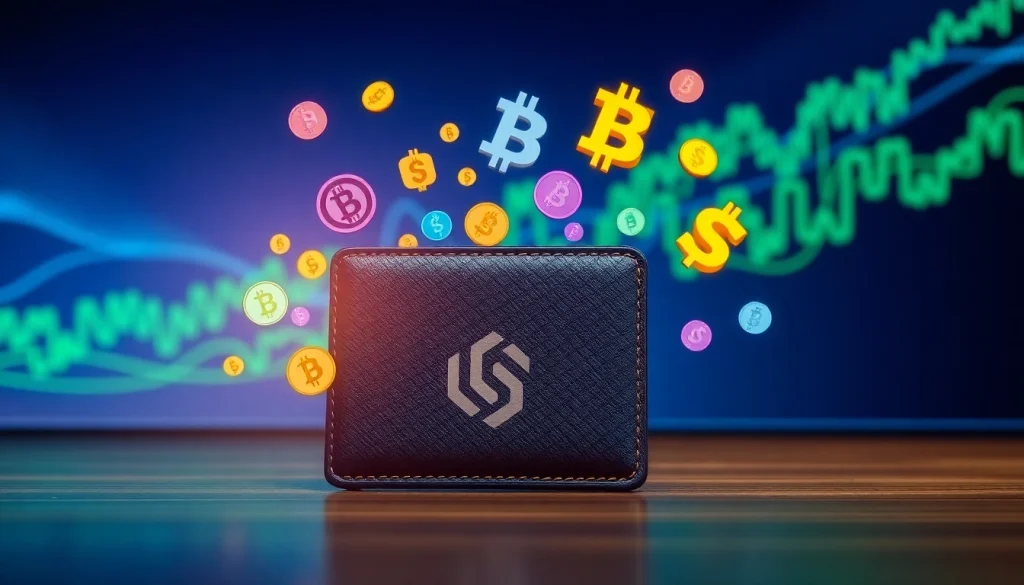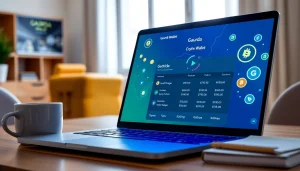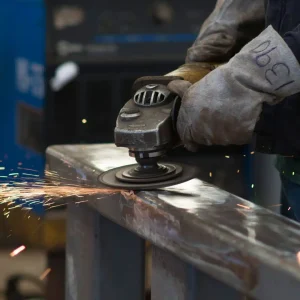Maximizing Your Crypto Assets with a Gaurda Wallet

Introduction to Gaurda Wallet
The world of cryptocurrency offers a plethora of opportunities for those willing to venture into digital assets. To navigate this landscape safely and effectively, a reliable cryptocurrency wallet is essential. Among the many options available, the gaurda wallet stands out for its versatility and user-friendly features. This article dives deep into what makes the Gaurda Wallet a favored choice for crypto enthusiasts, detailing its features, security measures, and best practices for users.
What is Gaurda Wallet?
Gaurda Wallet is a non-custodial, multiplatform cryptocurrency wallet designed to allow users to manage their digital assets effortlessly. Unlike custodial wallets, where a third party holds the private keys to your assets, Gaurda Wallet gives users complete control over their private and public keys. This decentralized approach ensures that users are the sole custodians of their cryptocurrencies, enhancing both security and peace of mind.
With support for numerous cryptocurrencies and tokens, Gaurda Wallet empowers users to send, receive, store, and exchange their assets with ease. Users can also enjoy features like staking, which allows them to earn additional crypto over time just by holding their coins in the wallet. Its user-friendly interface and cross-platform accessibility make it suitable for both beginners and experienced cryptocurrency users.
Key Features of Gaurda Wallet
The Gaurda Wallet is packed with features that cater to the diverse needs of cryptocurrency users. Below are some of its standout functionalities:
- Multi-Currency Support: The wallet supports a wide range of cryptocurrencies, allowing users to manage various assets in one location. This is particularly helpful for investors who diversify their portfolios.
- User-Friendly Interface: Gaurda Wallet is designed for simplicity, with an intuitive interface that makes navigation easy, even for beginners.
- Staking Options: Users can stake their tokens directly within the wallet, earning passive income over time.
- Cross-Platform Compatibility: The wallet is available on multiple platforms, including web, desktop, and mobile, providing flexibility and access to users regardless of their device.
- Built-In Exchange: Gaurda Wallet features an integrated exchange, enabling users to swap cryptocurrencies without leaving the app.
- Enhanced Security Measures: With private keys stored locally and not on centralized servers, the wallet prioritizes user security.
Importance of Security in Gaurda Wallet
Security is perhaps the most critical factor when choosing a cryptocurrency wallet, and Gaurda Wallet does not disappoint. Here are several key security features that contribute to its reputation as a secure platform:
- Non-Custodial Structure: Users are solely responsible for their private keys, which means that only they have access to their funds. This eliminates the risks associated with third-party custodians.
- Two-Factor Authentication (2FA): Gaurda Wallet supports 2FA, adding an extra layer of security by requiring a second form of verification during logins.
- Cold Storage: For added security, Gaurda Wallet’s architecture enables users to store their private keys offline, safeguarding against online threats.
- Regular Updates: The team behind Gaurda Wallet frequently updates the software to patch potential vulnerabilities and enhance user safety.
Step-by-Step Guide to Setting Up Gaurda Wallet
Getting started with Gaurda Wallet is a straightforward process. Here is a step-by-step guide to help you set up your account and start managing your cryptocurrencies effectively.
Creating Your Account
To create an account on Gaurda Wallet, follow these simple steps:
- Visit the Gaurda Wallet website or download the app from an official platform.
- Select the “Create Wallet” option from the home screen.
- Provide necessary information such as your email address and create a robust password. Ensure your password is a mix of letters, numbers, and special characters.
- Op-in for two-factor authentication (2FA) to enhance your account security.
- Review the terms and conditions, then confirm your acceptance.
- Once your account is created, you will receive a recovery phrase. Write this down and store it securely, as it will be vital for account recovery in case you forget your password.
Adding Your First Cryptocurrency
Once your Gaurda Wallet account is set up, you can start adding cryptocurrencies. Here’s how you can add your first asset:
- Log in to your Gaurda Wallet account.
- Navigate to the “Assets” tab on the homepage.
- Select the option to “Add Asset” and browse through the list of supported cryptocurrencies.
- Choose the cryptocurrency you wish to add and follow the prompts to complete the addition.
- If you are transferring existing coins from another wallet, select the “Receive” option for your chosen asset to display the wallet address. Use this address to send your funds.
Understanding Wallet Permissions
Gaurda Wallet offers various permissions that allow users to manage how their wallet interacts with other services. Understanding these permissions is crucial for maximizing your wallet’s security:
- Public Address: This is the address you share with others to receive funds securely.
- Private Key: Keep this information safe and never share it, as it gives access to your funds.
- Transaction Permissions: Be mindful of the permissions you grant to integrate with third-party services. Only allow access to apps or exchanges that you trust.
Best Practices for Using Gaurda Wallet
To ensure a smooth and secure experience while using Gaurda Wallet, consider the following best practices:
Safe Storage of Your Private Keys
Your private keys are the gateway to your cryptocurrencies. Thus, safeguarding them is of paramount importance. Here are strategies for safe storage:
- Backup Your Recovery Phrase: Write down your recovery phrase and store it in a secure location—not on your computer or online.
- Avoid Cloud Storage: Do not save sensitive information in cloud services, which may be vulnerable to hacking.
- Use Hardware Wallets: For those holding a substantial amount of cryptocurrency, consider using hardware wallets that store keys offline.
Regularly Updating Your Software
Keeping your Gaurda Wallet application updated ensures that you take advantage of the latest security features. Set reminders to check for updates regularly. Enable auto-update features if available, as these will provide updates without requiring manual intervention, ensuring optimal security without inconvenience.
Utilizing Wallet Features to Maximize Security
Gaurda Wallet includes features designed to enhance your security further. Utilize these options:
- Enable 2FA: Always enable two-factor authentication when logging in.
- Review Permissions: Regularly review and manage permissions granted to third-party applications accessing your wallet.
- Monitor Transactions: Regular checks on your transaction history can help detect any unrecognized activity quickly.
Common Challenges with Gaurda Wallet and Solutions
Like any technology, using Gaurda Wallet may present challenges. Here, we address common issues and provide practical solutions:
Addressing Connectivity Issues
Occasionally, users may experience connectivity problems when trying to access their Gaurda Wallet. This can be due to various reasons, including network issues or server outages. Here are steps to troubleshoot:
- Check your internet connection to ensure it is stable.
- Clear your app cache or browser cache and try again.
- Restart your device or try accessing the wallet from a different device or browser.
Managing Multiple Cryptocurrencies
When managing multiple cryptocurrencies, users may face challenges with tracking transactions and understanding market fluctuations. To streamline this process:
- Use Gaurda Wallet’s assets tracking feature to get real-time updates on your portfolio.
- Consider creating separate folders within your wallet for categorizing assets based on your investment strategy or market trends.
- Stay informed about market news related to the specific cryptocurrencies you hold to make better investment decisions.
Recovering Access to Your Wallet
In cases where a user forgets their password or can’t access their account, recovery options are vital. Follow these tips to recover your wallet:
- Use your recovery phrase to restore your account on a new device if you lose access to your original.
- If you can’t remember your password, use the “Forgot Password” link to initiate a reset procedure via your registered email.
- Contact Gaurda Wallet customer support if issues persist, but be prepared to provide credible proof of ownership.
The Future of Cryptocurrency Management with Gaurda Wallet
As the cryptocurrency landscape continues to evolve, Gaurda Wallet is positioned as a forward-thinking solution for digital asset management. Here are trends and future prospects that highlight the wallet’s ongoing development:
Trends in Crypto Wallet Development
The future of cryptocurrency wallets is driven by increased user demand for security, usability, and integration. Innovations like biometric authentication and decentralized identity solutions will likely become standard in wallets like Gaurda Wallet. By continuously refining product features, Gaurda remains relevant and competitive, adapting swiftly to industry trends.
Integration with Other Financial Tools
The integration of wallets with other financial tools is essential for a comprehensive user experience. Gaurda Wallet can potentially expand its offerings by partnering with DeFi protocols, providing users access to lending and earning opportunities directly from their wallet interface. Such integrations would enhance the wallet’s functionality and position it as a one-stop solution for decentralized finance.
Preparing for Evolving Security Threats
As security threats evolve, Gaurda Wallet’s development team must stay ahead of potential vulnerabilities. Continuous investment in advanced encryption technologies, AI-driven anomaly detection systems, and user education about security practices will be crucial in keeping users’ assets secure.





